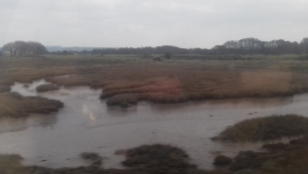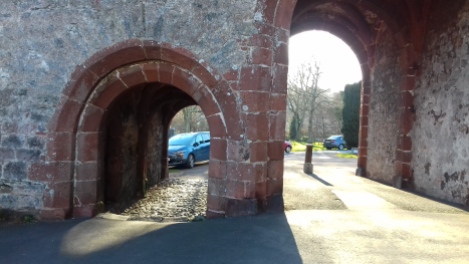TWTWWTW! And this one’s serious! It was International Women’s Week! Not to be confused with the comedy ‘That was the Week that was’ then, though it sometimes might tell (an alternative version of) that story too. Tell it to the BBC! – and all…
First and foremost this week this year I wanted to celebrated a hundred years. I thought that was the big theme: a hundred years of votes for women! It wasn’t exactly 100 for women like me, without property, as I wrote in this poem, which came out in the EList, Waltham Forests’ unique and exemplary art info magazine (an example which other
boroughs should follow), but I am still celebrating this year because the struggle to get as far as the suffragettes did was very hard, so we have to give thanks to them who paved the way for us. My poem is a compressed version of my earlier blog post “100 +10”, and I decided to make the “plus 10” into a “minus 10”.
Neither a placard with ‘100 years’ on it, nor the Isle of Man’s world record of introducing women’s suffrage in 1881 featured at the annual Women of the World – WOW festival at London’s South Bank Centre. What a disappointment I thought! Fair enough, International Women’s Day itself had had it’s 100-year anniversary already in 2011 – so IWD is older than women’s suffrage – but for some reason this centenary grabs me even more. The Mind the Gap placard is from the WOW festival though, which i absolutely love, and would love to know who made it – so please if you know let me know (it was not actually from this year’s Women’s Week, it was from last year’s Week…)
I celebrated IWD by looking for prime suffragette (and active anticolonialist!) Sylvia Pankhurst! I mean, I looked for her sculpture in Mile End Park. On a day as significant as
this you might have expected other women paying homage to her, but there was no other pilgrim I encountered. Sadly, it’s not very well known she has a sculpture there. And sadly, her name is not mentioned in front of her sculpture – so if you haven’t googled for her, and you don’t happen to recognise her, you could pass by the sculpture and still not know! The fact that next to her is a representation of a mule doesn’t help, because she could be mistaken for a peasant.
Near where she is, there are boards telling you about the different kinds of spiders and beetles that live in Mile End Park, but there is no board to tell you about Sylvia Pankhurst! Just like with Elizabeth Garrud, the suffragette outside Finsbury Park, who I visited on the 6th February, the day of the centenary of votes for women (also in 100+10 blog post). She too, is not mentioned by name, and neither are the other two sculptures next to her. When googling, I found out that these sculptures were put up by the cycling charity Sustrans, in 2011 and 2013 respectively. It’s great they are publicly commemorating important people, but why can’t they put a name to them? Even the
sculptor him-or herself hasn’t been mentioned!
I remembered that the year before I found another sculpture in Beam Valley Park, between Dagenham and Hornchurch, which also features a women’s rights activist, maybe a trade unionist, I still don’t know because the sculpture doesn’t say! Look at this lovely pic and let me know. And then let Sustrans know that their sculptures are highly appreciated but could they please name them. Public memorials, after all, should be educational I think, otherwise they can’t even encourage women passers-by. And the point of women’s history, impact and significance is once again compromised, even made invisible. A sculpture, of course, is the opposite of invisibility, but if you don’t know who you are looking at, the perception of visibility is not guaranteed.
Later in the day, still on IWD, when I went to the South Bank to the WOW festival, I found, to my surprise that there was little going on! The market, so typical of the festival I thought, had not yet been set up, and all there was were empty benches! There was an event in the evening, fair enough, but the then-missing market, me and another feminist were told, would be up at the weekend – but we thought that IWD is the most important cause for the whole festival, this was the Day Par Excellence, and most of what we saw was emptiness! Wow! Yes, WOW indeed…
I did go back on the Sunday – and, amongst a lot of other things, reflected on the overlooked female forms within architecture (I always seem to come up with my own
events by thinking about things). So on the Sunday I was a little more impressed, but I think we have to take the day itself more serious. Not just as a festival of course. More like a reminder for the kind of revolution we should engage in, which has to be one for peace, because patriarchy, like capitalism and white supremacy is divisive and violent. We desperately need something more peaceful, more kindness, more communication, more fairness, more awareness, for the planet and all of ourselves, equality for all!











































